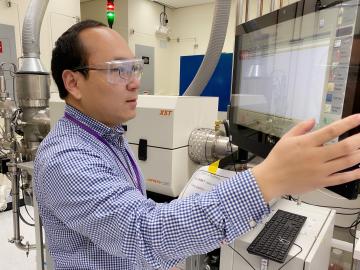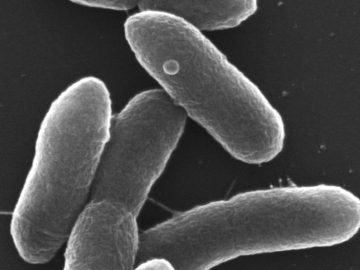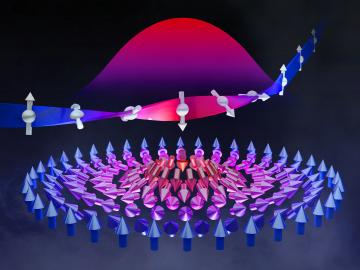
Filter News
Area of Research
- Advanced Manufacturing (5)
- Biological Systems (1)
- Biology and Environment (11)
- Computational Engineering (1)
- Computer Science (5)
- Energy Science (32)
- Fusion and Fission (4)
- Fusion Energy (7)
- Isotopes (3)
- Materials (54)
- Materials for Computing (3)
- National Security (8)
- Neutron Science (20)
- Nuclear Science and Technology (28)
- Nuclear Systems Modeling, Simulation and Validation (1)
- Quantum information Science (1)
- Supercomputing (33)
- Transportation Systems (1)
News Topics
- (-) Big Data (18)
- (-) Biomedical (27)
- (-) Biotechnology (3)
- (-) Critical Materials (2)
- (-) Grid (12)
- (-) Materials Science (57)
- (-) Molten Salt (3)
- (-) Nuclear Energy (48)
- (-) Space Exploration (6)
- 3-D Printing/Advanced Manufacturing (43)
- Advanced Reactors (21)
- Artificial Intelligence (20)
- Bioenergy (22)
- Biology (5)
- Buildings (1)
- Chemical Sciences (5)
- Clean Water (7)
- Composites (3)
- Computer Science (74)
- Coronavirus (25)
- Cybersecurity (9)
- Energy Storage (29)
- Environment (48)
- Exascale Computing (5)
- Frontier (3)
- Fusion (18)
- High-Performance Computing (3)
- Isotopes (9)
- Machine Learning (13)
- Materials (2)
- Mathematics (2)
- Mercury (2)
- Microscopy (13)
- Nanotechnology (23)
- National Security (2)
- Neutron Science (56)
- Physics (19)
- Polymers (9)
- Quantum Science (24)
- Security (5)
- Summit (26)
- Transportation (27)
Media Contacts

Four research teams from the Department of Energy’s Oak Ridge National Laboratory and their technologies have received 2020 R&D 100 Awards.

About 60 years ago, scientists discovered that a certain rare earth metal-hydrogen mixture, yttrium, could be the ideal moderator to go inside small, gas-cooled nuclear reactors.

ORNL scientists have modified a single microbe to simultaneously digest five of the most abundant components of lignocellulosic biomass, a big step forward in the development of a cost-effective biochemical conversion process to turn plants into

Radioactive isotopes power some of NASA’s best-known spacecraft. But predicting how radiation emitted from these isotopes might affect nearby materials is tricky

The Department of Energy announced awards for 10 projects with private industry that will allow for collaboration with DOE national laboratories in accelerating fusion energy development.

A developing method to gauge the occurrence of a nuclear reactor anomaly has the potential to save millions of dollars.

Oak Ridge National Laboratory scientists have discovered a cost-effective way to significantly improve the mechanical performance of common polymer nanocomposite materials.

Scientists discovered a strategy for layering dissimilar crystals with atomic precision to control the size of resulting magnetic quasi-particles called skyrmions.

Two staff members at the Department of Energy’s Oak Ridge National Laboratory have received prestigious HENAAC and Luminary Awards from Great Minds in STEM, a nonprofit organization that focuses on promoting STEM careers in underserved

The inside of future nuclear fusion energy reactors will be among the harshest environments ever produced on Earth. What’s strong enough to protect the inside of a fusion reactor from plasma-produced heat fluxes akin to space shuttles reentering Earth’s atmosphere?


